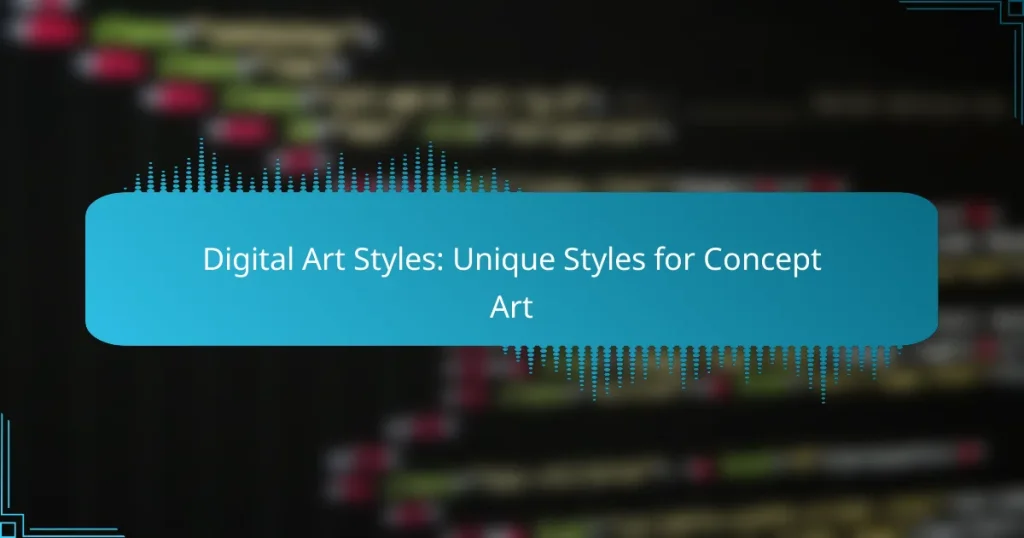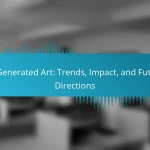Unique digital art styles for concept art offer a diverse array of techniques that help artists visually communicate their ideas. From realistic depictions to abstract interpretations, each style serves a distinct purpose in the creative process. Selecting the appropriate style involves considering the project’s goals and audience, ensuring that the visual representation aligns with the intended message.

What Are the Unique Digital Art Styles for Concept Art?
Unique digital art styles for concept art encompass various techniques and approaches that artists use to convey ideas visually. These styles can range from highly realistic portrayals to imaginative and abstract representations, each serving different purposes in the creative process.
Realism
Realism in digital art aims to create lifelike representations of subjects, focusing on accurate details, proportions, and lighting. Artists often use high-resolution textures and advanced rendering techniques to achieve a convincing appearance. This style is commonly used in concept art for video games and films where visual authenticity is crucial.
When working with realism, pay attention to anatomy, perspective, and color accuracy. Utilizing reference images can significantly enhance the quality of your work. Avoid over-reliance on filters or effects that may detract from the natural look.
Surrealism
Surrealism combines realistic elements with dream-like or fantastical components, creating an otherworldly atmosphere. This style encourages artists to explore their imagination and depict scenes that challenge reality. Surrealistic concept art is often used to evoke emotions and provoke thought, making it popular in various media.
To create surrealistic art, experiment with unexpected juxtapositions and unusual color palettes. Incorporating symbolic elements can add depth to your work. Be cautious of overcrowding your composition, as clarity is essential for conveying your intended message.
Abstract
Abstract digital art focuses on shapes, colors, and forms rather than realistic representation. This style allows for a high degree of creativity and personal expression, often conveying emotions or concepts through non-representational means. Abstract art is frequently used in branding and advertising to create striking visuals.
When creating abstract art, consider the balance and harmony of your composition. Use color theory to evoke specific feelings and ensure that your elements work cohesively. Avoid overcomplicating your designs; sometimes, simplicity can be more impactful.
Pixel Art
Pixel art is a digital art form that uses small, square pixels to create images, often reminiscent of retro video games. This style emphasizes simplicity and nostalgia, making it popular for indie games and mobile applications. Pixel art can range from simple icons to complex scenes, depending on the artist’s skill and intention.
To excel in pixel art, focus on limited color palettes and clear shapes. Mastering techniques like dithering can enhance texture and depth. Be mindful of resolution; too few pixels can lead to unclear images, while too many can complicate the design.
3D Art
3D art involves creating three-dimensional representations using specialized software, allowing for realistic lighting, shadows, and textures. This style is widely used in gaming, animation, and virtual reality, providing immersive experiences for viewers. Artists can manipulate models to create dynamic scenes and characters.
When working with 3D art, understanding the principles of modeling, texturing, and rendering is essential. Use reference materials to guide your designs and ensure realism. Avoid excessive detail that may hinder performance in real-time applications, especially in gaming environments.

How to Choose the Right Digital Art Style?
Choosing the right digital art style involves aligning your artistic approach with the project’s objectives and audience expectations. Consider factors like the intended message, visual appeal, and the medium of presentation to make an informed decision.
Consider the Project Goals
Begin by identifying the primary goals of your project. Are you aiming to evoke emotion, convey a narrative, or showcase a product? Each goal may require a different artistic style, such as realistic, abstract, or cartoonish.
For instance, a project focused on storytelling might benefit from a style that emphasizes character expression and detail, while a promotional piece may need a more polished and clean look. Always keep the end purpose in mind when selecting your style.
Understand the Target Audience
Your target audience significantly influences the choice of digital art style. Different demographics respond to various aesthetics; for example, younger audiences may prefer vibrant, playful designs, while older viewers might appreciate more subdued and sophisticated visuals.
Conducting research on your audience’s preferences can provide valuable insights. Consider creating mood boards or sketches that reflect different styles and gather feedback to refine your direction.
Evaluate Technical Skills
Your technical skills play a crucial role in determining which digital art style you can effectively execute. If you are proficient in certain software or techniques, leverage those strengths to create a style that showcases your abilities.
For example, if you excel in vector art, consider a clean, graphic style that utilizes your skills. Conversely, if you are more comfortable with painting techniques, a painterly style might be more suitable. Always choose a style that complements your skill set to ensure quality results.
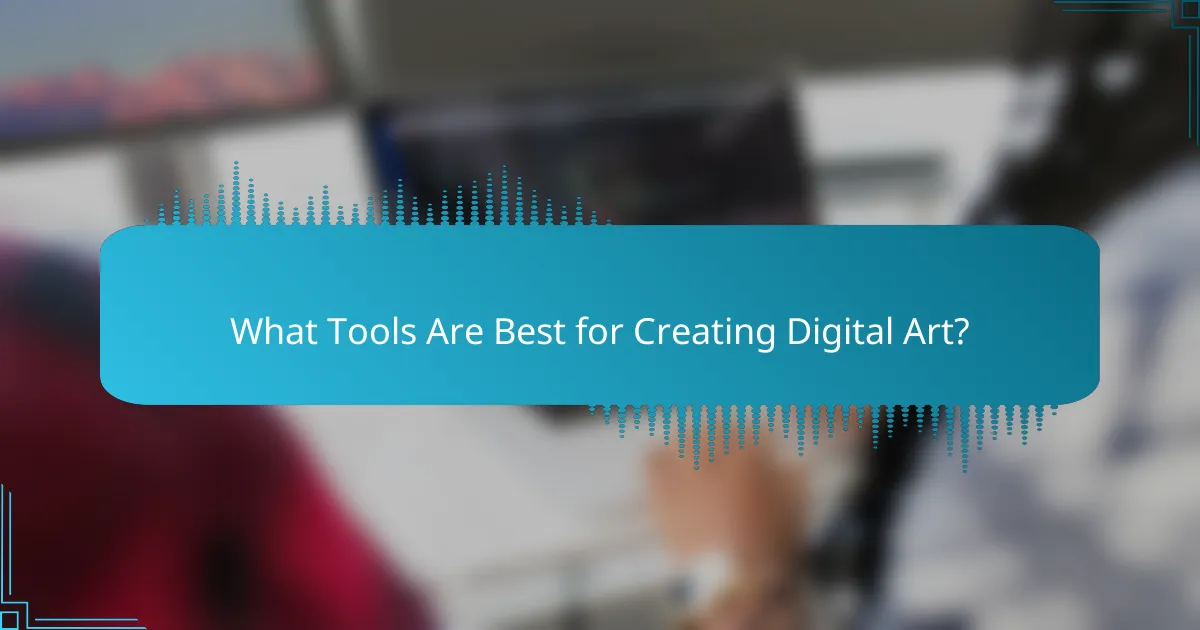
What Tools Are Best for Creating Digital Art?
The best tools for creating digital art depend on your specific needs and preferences. Popular options include software that offers a range of features for drawing, painting, and editing, allowing artists to express their creativity effectively.
Adobe Photoshop
Adobe Photoshop is a versatile tool widely used for digital art, especially for concept art and photo manipulation. It offers a robust set of brushes, layers, and editing tools that cater to both beginners and professionals.
When using Photoshop, take advantage of its customizable brushes and the ability to work with high-resolution canvases. However, be mindful of its subscription model, which may not suit everyone’s budget.
Procreate
Procreate is a popular app for iPad users, known for its intuitive interface and powerful features. It allows artists to create stunning illustrations with a natural drawing experience, thanks to its responsive touch controls.
Consider Procreate if you prefer working on a tablet. Its one-time purchase model makes it cost-effective compared to subscription-based software. However, it is limited to iOS devices, which may restrict accessibility for some users.
Corel Painter
Corel Painter is designed specifically for digital painting, offering a wide array of brushes that mimic traditional media. It’s ideal for artists looking to replicate the look and feel of oil, watercolor, or acrylic paints.
When using Corel Painter, explore its extensive brush customization options to achieve unique textures. Keep in mind that it may have a steeper learning curve compared to other software, so patience is essential.
Clip Studio Paint
Clip Studio Paint is favored by comic and manga artists for its specialized features, such as panel layouts and 3D models. It combines drawing and painting tools, making it suitable for a variety of artistic styles.
This software offers a one-time purchase option, which can be more economical in the long run. However, ensure your hardware meets the requirements for optimal performance, especially when working with large files or multiple layers.
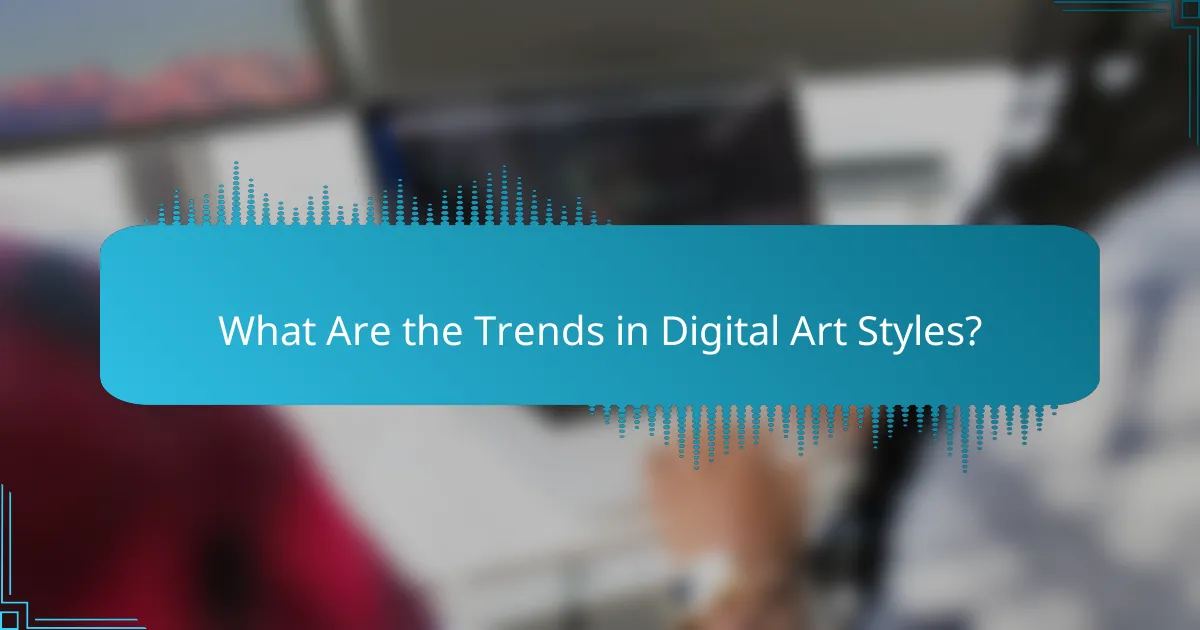
What Are the Trends in Digital Art Styles?
Current trends in digital art styles reflect a significant shift towards innovative techniques and technologies, particularly the integration of artificial intelligence and augmented reality. Artists are increasingly adopting these tools to enhance creativity and engage audiences in new ways.
Increased Use of AI Tools
The use of AI tools in digital art has surged, allowing artists to generate unique visuals and streamline their creative processes. These tools can assist in everything from concept generation to final rendering, providing options that range from simple enhancements to complex algorithm-driven creations.
Artists should consider the balance between their own creativity and the capabilities of AI. While AI can produce stunning results, relying too heavily on it may diminish the personal touch that defines an artist’s style. Experimenting with AI-generated elements can be beneficial, but maintaining a distinct artistic voice is crucial.
Integration of Augmented Reality
Augmented reality (AR) is becoming a prominent feature in digital art, enabling artists to create immersive experiences that blend the physical and digital worlds. This technology allows viewers to interact with art pieces in real-time, enhancing engagement and offering a new dimension to storytelling.
To effectively use AR, artists should focus on how their work can be experienced in a three-dimensional space. Simple applications can include overlaying digital elements onto physical canvases or creating interactive installations. Understanding the technical requirements and user experience is essential for successful AR integration.
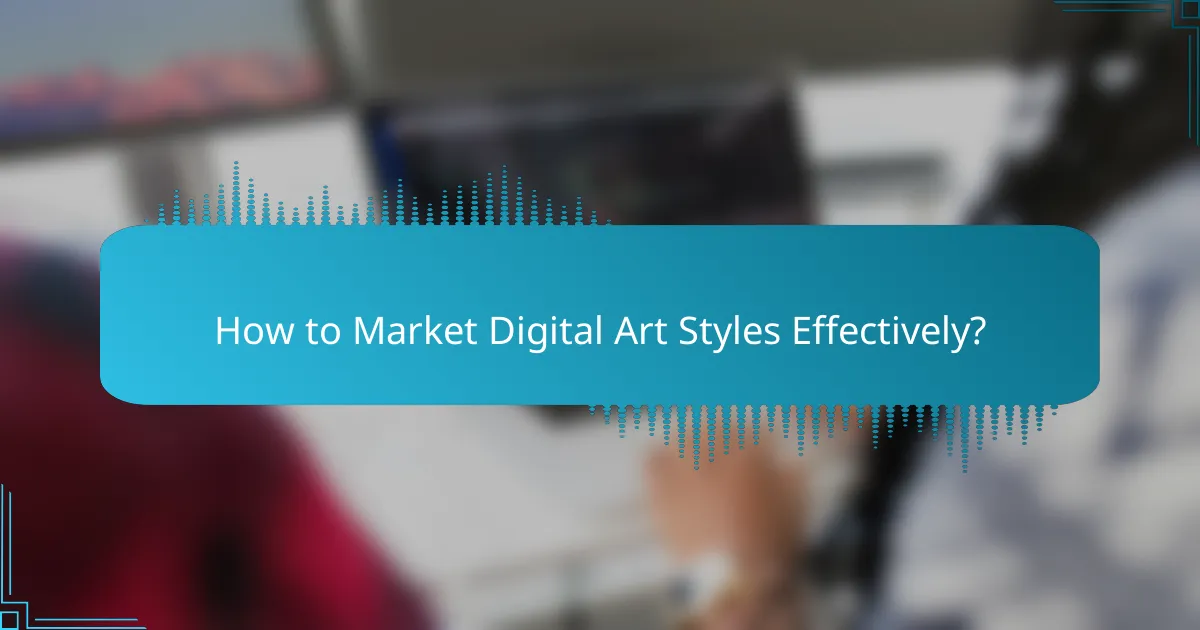
How to Market Digital Art Styles Effectively?
To market digital art styles effectively, focus on building a strong online presence and engaging with your target audience. Utilize social media platforms, art communities, and personal websites to showcase your work and connect with potential buyers.
Utilizing Social Media Platforms
Social media is a powerful tool for promoting digital art styles. Platforms like Instagram, Twitter, and Pinterest allow artists to share their creations visually and interact with followers. Regularly posting high-quality images and engaging content can help attract attention and build a loyal fanbase.
Consider using relevant hashtags to increase visibility and join art-related groups to network with other artists and potential clients. Collaborating with influencers or participating in art challenges can also enhance your reach.
Creating a Personal Website
A personal website serves as a central hub for your digital art portfolio. It should showcase your best work, provide information about your artistic style, and include a blog or news section to keep visitors updated. Make sure the website is user-friendly and optimized for mobile devices.
Incorporate an online store or links to platforms where your art can be purchased. This makes it easy for interested buyers to acquire your work directly, enhancing your sales potential.
Engaging with Art Communities
Joining online art communities can significantly boost your visibility and credibility. Websites like DeviantArt, ArtStation, and Behance allow artists to share their work and receive feedback. Engaging with other artists and participating in discussions can lead to valuable connections and opportunities.
Consider entering contests or exhibitions hosted by these communities to gain exposure. Networking within these platforms can also lead to collaborations and commissions, further expanding your reach.
